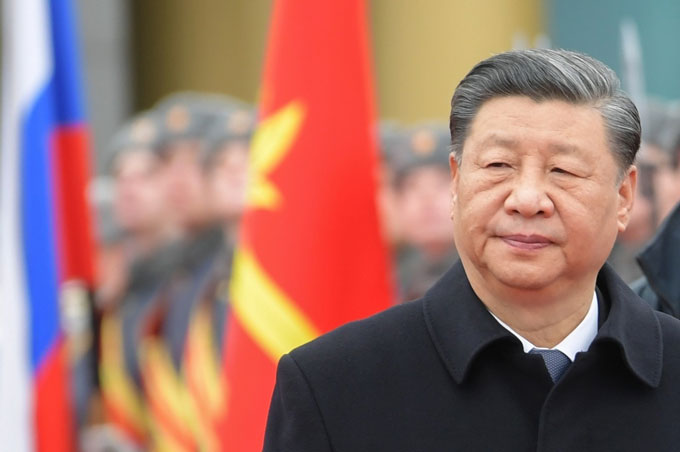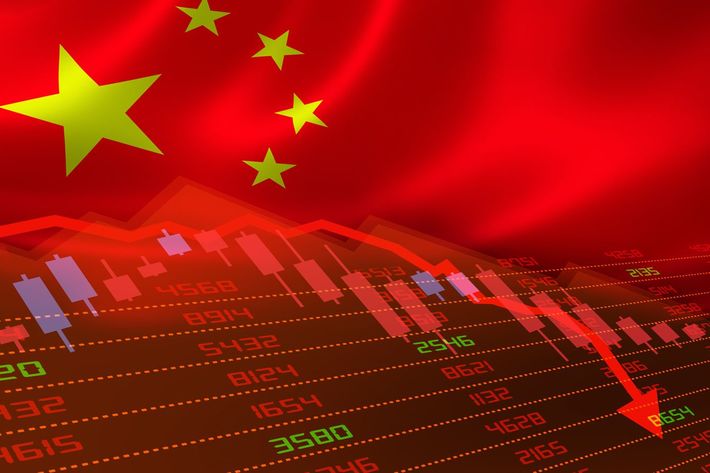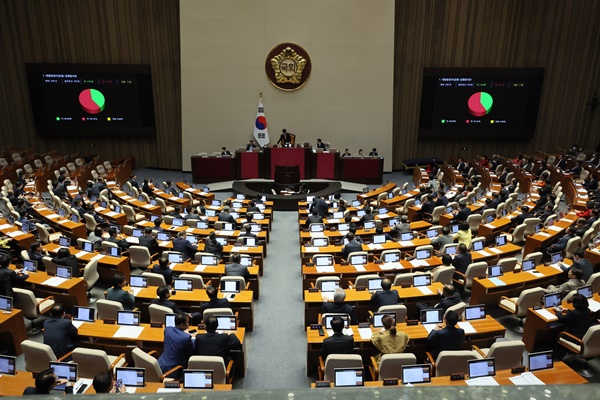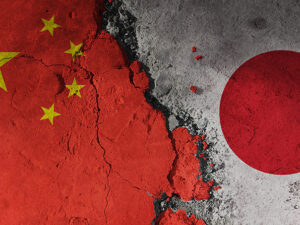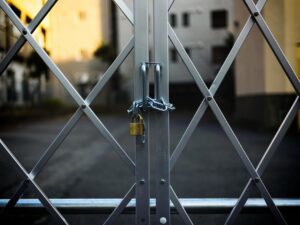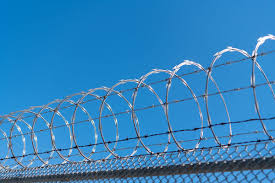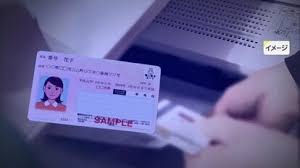Historically, the ROK, located on the Korean Peninsula, has existed as a buffer zone between the continental powers of China and Russia and the maritime powers of Japan and the United States. Since the Cold War, the ROK has moved closer to the rapidly growing China, and for a long time its economy has depended on exports to China, but now it has reached a major turning point, according to freelance writer Yuji Sawabe. How will Japan-South Korea relations change in the future as a result of the change in South Korea’s policy? This article is an excerpt from “The Easiest Book on Geoeconomics. The Korean Peninsula is the buffer zone east of Eurasia Let us look at the geo-economics of two countries on the Korean Peninsula, South Korea and North Korea. First is South Korea. From a geopolitical perspective, the Korean Peninsula, which extends out to sea from mainland China, is a buffer zone where the powers of various countries are competing with each other. Specifically, it is a place where China and Russia, as land powers, and Japan and the United States, as sea powers, check each other. If we take a bird’s-eye view of the Eurasian continent with Russia at the center, the buffer zone to the west is Ukraine, and the buffer zone to the east is the Korean Peninsula.
Since Korea borders China, it has historically been threatened by successive Chinese empires. It has sometimes vigorously resisted Chinese invasions, but when this proved futile, it showed loyalty and accepted its status as a vassal state. In this sense, for better or worse, the country most closely associated with Korea is its land power, China. The Korean War began in 1950, and the 1953 armistice cemented the division between North and South Korea, with the 38th parallel of northern latitude as the border. As a result, South Korea was separated from mainland China by North Korea, effectively becoming an “island nation” and joining the sea power camp of Japan and the U.S. Japan provided economic assistance to South Korea, and the U.S. provided economic assistance to South Korea. South Korea will receive economic support from Japan and security cooperation from the United States.
South Korea is home to companies such as Samsung and Hyundai, but it was during the Park Chung-hee administration (1963-1979) that these world-class companies grew up. The Park administration succeeded in bringing about the “Miracle on the Han River” economic development by introducing foreign currency and encouraging free competition, while maintaining a military dictatorship. Incidentally, China’s Deng Xiaoping took a cue from the Park administration and adopted a reform and open-door policy. North Korea’s Kim Il Sung, on the other hand, did not adopt this approach, and the economy continued to stagnate.
South Korea, which had achieved economic development as one of the sea power camps of Japan and the U.S., moved closer to China, which emerged after the Cold War, and its relationship with Japan and the U.S. deteriorated. The ROK economy is built on exports. The high degree of dependence on exports is a characteristic of the ROK economy. Korea’s export dependence (exports as a percentage of GDP, 2021) is 35.6%. Among major countries, it is as high as Germany’s 38.6%. Incidentally, China, Japan, and the U.S. account for 19.0%, 15.0%, and 7.6%, respectively. The high degree of dependence on exports means that the economy is greatly affected by favorable or unfavorable export conditions. Moreover, Korea’s dependence on exports is directly linked to its dependence on exports to China. Exports to China account for 25.3% of Korea’s total exports, and if Hong Kong is added to this figure, the share will reach 31.1% (in 2021).
There is a phrase in Korea, “An America, a China. This means “the U.S. provides security and China provides the economy. The ROK economy is dependent on China. If problems arise in the ROK-China relationship, the ROK economy will suffer a major blow. In other words, the geo-economic choke point for the ROK is its dependence on exports to China. In fact, this choke point is being targeted. In 2016, the U.S. Forces in South Korea planned to deploy the THAAD (Terminal High Altitude Interceptor Array), a ground-based missile defense system.
China vehemently opposed this, fearing that THAAD, which was designed for North Korean ballistic missiles, would monitor China’s defense posture as well because of its radar detection capabilities, which are so wide-ranging. However, the Park Geun-hye administration of the time decided to deploy it. This led to a widespread boycott of South Korean companies in China, including Lotte, which provided the land for the THAAD deployment. The number of Chinese tourists to South Korea plummeted. The Chinese government imposed de facto economic sanctions by imposing the “Limited Korea Decree,” which restricted trade with South Korea, and South Korean industry suffered a major blow.
In the first place, ROK exports to China have been sluggish. Breaking away from dependence on exports to China is now recognized as an important issue for the ROK. To begin with, Korean exports are not selling as well in China as they used to. The value of exports to China continued to grow from 2000 to 2013, but has been sluggish since then. The reason for this is the improvement in the quality of Chinese products. The advantage of Korean products has almost disappeared. Korean-made smartphones and automobiles are being shut out of the Chinese market. In third country markets, China has become Korea’s rival. Nevertheless, China still needs South Korean semiconductors and is increasing its imports. However, China is also trying to become Korea’s rival in this semiconductor manufacturing.
In other words, the ROK has reached a stage where it cannot expect China to remain a market for the ROK indefinitely. Australia can serve as an example of how to break away from dependence on exports to China. At one time, Australia’s dependence on exports to China reached nearly 40%. However, in the face of China’s economic retaliation from 2020, it was unable to export coal and other products, and it averted the crisis by increasing exports to other countries such as Japan, India, and South Korea. China’s economic retaliation against Australia is said to have ended in failure. Korea is also expected to diversify its export destinations in this way.
In fact, in 2022, Korea’s exports to China declined by 4.4%, while exports to non-China countries increased by 9.6%. Korea is shifting its focus to expanding exports to countries other than China. In tandem with this trend, sentiment toward China is deteriorating in the ROK. For example, real estate and housing prices have skyrocketed due in part to the bombing of Korean land and housing units by the Chinese, China’s economic retaliation against the deployment of THAAD as mentioned above, and antipathy toward the new coronavirus outbreak from Wuhan is growing.
And the current administration of Yun Suk-yeol is trying to return to the sea power camp of the U.S. and Japan. The ROK is now trying to steer away from its long-standing dependence on China and toward a “departure from China. Japan-South Korea geo-economic offensive is coming to an end. The history card played by South Korea includes the conscription issue (a lawsuit by South Koreans who claim that they were forced to work in Japan as conscripts during the Japan-Korea annexation period and sought compensation from Japanese companies) and the comfort women issue (a claim that the Japanese military forcibly took comfort women to Japan during the war).
However, the conscription issue has already been resolved by the Japan-Korea Claims Agreement of 1965, and the comfort women issue is also considered to have been resolved by the Japan-Korea Comfort Women Agreement of 2015. In South Korea, anti-Japanese education has been provided since independence. During the Cold War, Japan needed Japan’s support, so it kept Japan-Korea friendship and did not cut the history card, but after the Cold War, pro-China governments have increasingly cut the history card as an anti-Japan policy. In response to these attacks by South Korea, Japan is playing the “economic” card.
In October 2018, under the Moon Jae-in administration, South Korea’s Supreme Court ruled to order Japanese companies to pay compensation over the issue of former labor disputes. Then, in July 2019, the Japanese government restricted the export of semiconductor materials hydrogen fluoride, fluorinated polyimide, and EUV resist to South Korea. South Korea is home to Samsung and SK Hynix, the world’s No. 1 and No. 3 companies in the semiconductor sector, respectively, but it relies on Japan for many of its components and materials. After studying the choke points in South Korea, the Japanese government targeted the three semiconductor materials.
Furthermore, in August of the same year, Korea was excluded from the so-called “white countries” (Group A), which allows simplified export procedures. In response, South Korea removed Japan from the “white countries” list and filed a complaint with the World Trade Organization (WTO) regarding Japan’s export restrictions. Thus, Japan and South Korea engaged in a geo-economic battle, but under the administration of Yun Suk-yue, the two countries have begun to compromise. Korea withdrew its WTO complaint and reinstated Japan as a White Country. In response, the Japanese government abolished export restrictions on three materials and reinstated Korea as a white country (Group A).
It can be said that Japan’s geo-economic strategy of targeting choke points has had a certain effect. It is a strategy that can be applied to Japan-Korea relations in the future.
Yuji Sawabe :Freelance Writer
